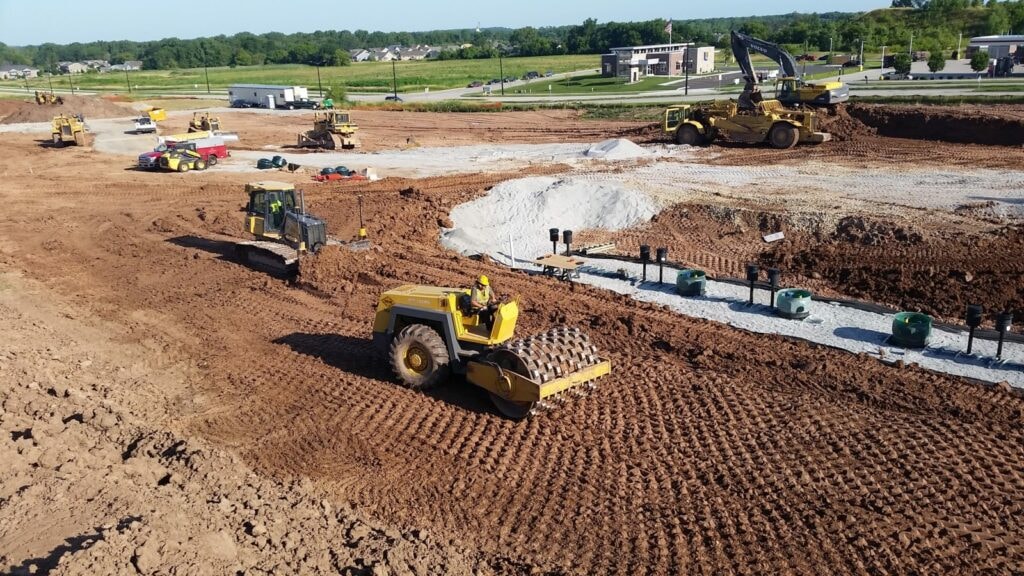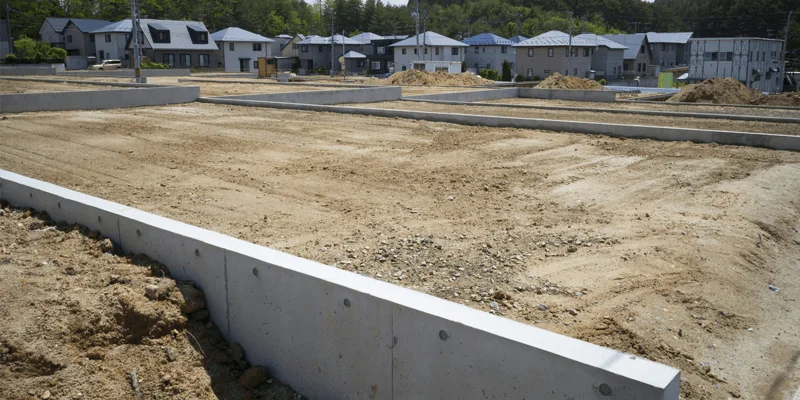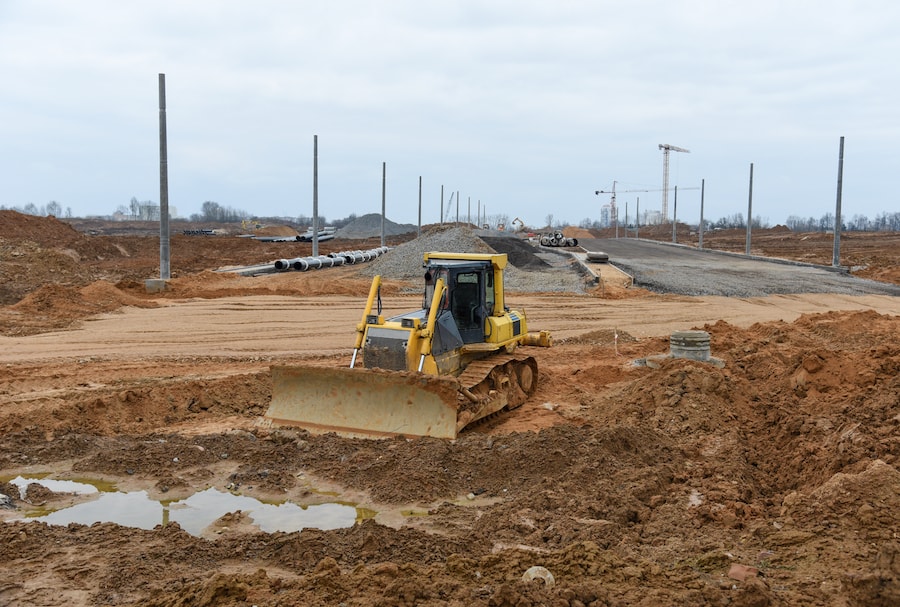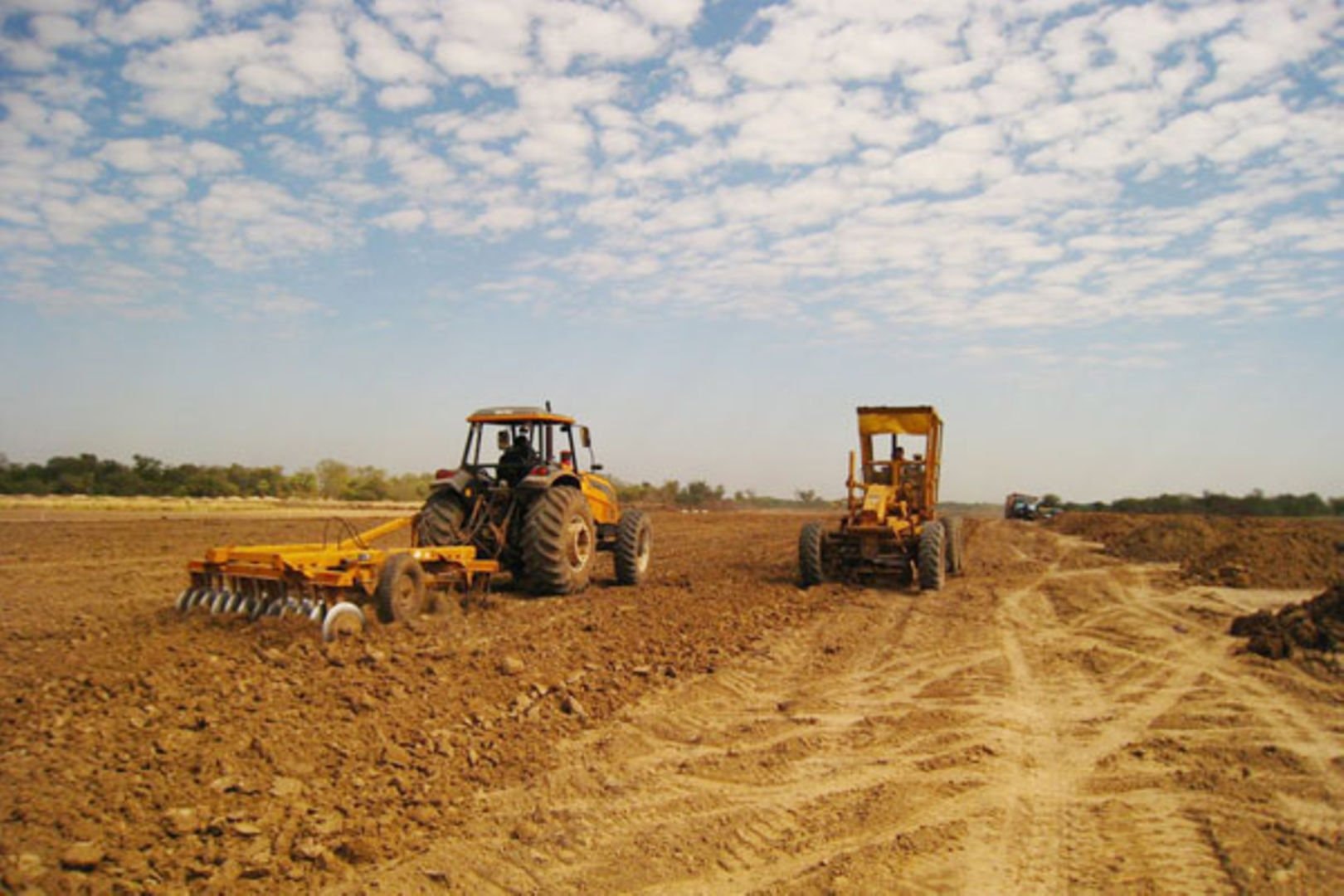At RJT Construction, a trusted local business in Houston, we understand that the foundation of a successful construction project starts with proper land grading. Whether you’re planning a residential or commercial property, proper grading is crucial in ensuring the stability and longevity of your structure.
Land grading is not just about leveling the ground; it’s about creating a solid foundation that supports the building while preventing common issues like soil erosion and improper drainage. By prioritizing professional land grading, you can avoid costly drainage issues, protect the surrounding environment, and enhance the overall value of your commercial property.

Understanding Land Grading in Construction
Land grading in construction refers to the process of reshaping and leveling the land to create a stable and even ground surface for building. This essential step in the site preparation process involves altering the terrain to ensure proper water flow and prevent issues like soil erosion and water accumulation. The grading process is critical in achieving the right slope and gradient, which are necessary for directing water away from the foundation.
Rough grading is the initial stage where the land is shaped according to the architectural grading plan, removing high spots and filling low areas. This step sets the groundwork for final grade, which involves fine-tuning the surface to meet the specific slope requirements, ensuring proper drainage and stability for the construction project.

Properly executed land grading is fundamental to the success of any construction project, providing a solid foundation for the structure and preventing future problems related to soil and water management.
The Grading Process: Steps Involved in Ensuring Success
Site Analysis and Planning
The first step in the grading process is a thorough site analysis and planning. Creating a detailed grading plan is crucial for ensuring the success of the construction project. This plan takes into account various factors, including soil composition, topography, and existing structures.
Understanding the soil stability and how it will interact with the proposed construction is essential in preventing future issues like uneven settling or erosion. Additionally, analyzing the site’s topography helps in designing a grading plan that promotes proper drainage and minimizes the risk of water runoff affecting nearby properties.

Excavation, Filling, and Soil Compaction
Once the site analysis and planning are complete, the next step involves the physical reshaping of the land. This process requires the use of heavy machinery such as bulldozers and backhoes to perform excavation and filling tasks. Excavation involves removing excess soil from high areas, while filling adds soil to low spots, creating a level surface that meets the desired contour and slope.
Soil compaction is a critical part of this process, as it ensures that the soil beneath the structure is dense and stable. Proper compaction reduces the risk of future settling, which can lead to foundation problems. Achieving a uniformly compacted surface is key to providing a solid foundation for the construction project, ensuring that the building will be stable and secure for years to come.
By following these essential steps in the grading process, RJT Construction ensures that your project is built on a foundation that is both stable and optimized for proper drainage, minimizing the risk of structural issues and enhancing the overall success of the construction project.
Benefits of Proper Grading in Construction Projects
Ensuring Proper Drainage
Proper grading is essential for preventing water runoff and eliminating drainage issues that can damage a building’s foundation. By shaping the land to direct water away from the structure, grading helps avoid water pooling, which can lead to foundation weakening and other structural problems.
Additionally, the installation of efficient drainage systems ensures that water flows correctly through and around the property, further protecting the construction site from potential water-related damage.

Preventing Soil Erosion and Enhancing Soil Stability
Grading plays a critical role in preventing soil erosion, which can compromise the stability of a construction project. By creating a slope that directs water away from the site, grading reduces the risk of soil being washed away during heavy rains.
To further ensure soil stability, erosion control measures like terracing and contouring are implemented. These techniques help maintain the integrity of the soil, especially on steep slopes, reducing the likelihood of landslides and soil displacement that could endanger the structure.
Enhancing Property Value and Aesthetics
Properly graded land not only ensures a stable foundation but also significantly enhances the appearance and property value of a construction project. A well-graded site creates a visually appealing landscape, which can include outdoor living spaces and areas conducive to plant growth. These improvements make the property more attractive to potential buyers and increase its overall market value.

Common Mistakes to Avoid in Land Grading
Ignoring Soil Composition and Stability
One of the most critical mistakes in land grading is failing to consider the soil composition and stability. Different soil types have varying levels of load-bearing capacity, and ignoring these differences can lead to uneven terrain or even structural failure. For instance, building on loose, sandy soil without proper compaction can result in shifting foundations and unstable structures, leading to costly repairs or even complete rebuilds.
Failing to Implement Erosion Control
Neglecting erosion control measures is another common and costly mistake in land grading. Without proper measures, such as terracing, contouring, or the use of retaining walls, steep slopes can quickly become unstable, leading to landslides or erosion that undermines the structural integrity of the project.
Retaining walls are particularly important in areas with steep slopes, as they help hold back soil and prevent it from sliding, ensuring the long-term stability of the construction site. Failing to implement these controls can result in significant damage to both the landscape and the building itself.
Regulatory Requirements for Land Grading
Compliance with local building codes and zoning regulations is crucial in any land grading project to ensure safety and environmental protection. Before beginning any grading work, it is essential to obtain approval from the city’s building department.
This process involves submitting a detailed grading plan that outlines the scope of work, including earthwork estimates, property lines, and drainage systems. The building department assesses the plan to ensure that the proposed grading meets all regulatory requirements and does not negatively impact surrounding areas.
Moreover, it is important to consider environmental concerns during the grading process. Proper land grading must be done in a way that protects nearby water bodies from sediment runoff, which can lead to pollution and ecological damage. By adhering to local regulations and environmental guidelines, construction projects can avoid legal complications and contribute to the preservation of the local environment.
Environmental Benefits of Proper Land Grading
Reducing Soil Erosion and Protecting Water Bodies
Proper land grading is vital in protecting nearby water bodies from sediment pollution. By designing slopes and drainage systems that channel water away from construction sites, grading prevents sediment from being washed into rivers, lakes, and streams.
This protection is essential for maintaining water quality and the health of aquatic ecosystems. Erosion control measures, such as silt fences and sediment basins, further reduce the risk of contaminating nearby water sources during construction activities.
Promoting Healthier Landscapes and Sustainable Construction
Proper grading also plays a significant role in promoting healthier landscapes and supporting sustainable construction practices. By ensuring the land is appropriately shaped and stabilized, grading creates an environment that is conducive to healthy plant growth and reduces the need for chemical soil stabilizers.
Additionally, it helps in controlling water runoff, which minimizes the risk of flooding and soil degradation, contributing to a more sustainable construction process that respects and preserves the natural environment.
Best Practices for Effective Land Grading in Construction Projects
Hiring Experienced Grading Contractors
One of the best practices for effective land grading is hiring professional grading contractors who possess the necessary expertise and equipment. Experienced contractors understand the complexities of soil composition, terrain, and local regulations, ensuring the grading process is executed efficiently and safely.

Implementing a Strategic Grading Plan
A well-planned grading strategy is crucial for the success of a construction project. This plan should include specific erosion control measures, such as terracing and retaining walls, to prevent soil movement and ensure the stability of the site. A strategic grading plan also addresses water drainage, helping to prevent potential issues down the line.
Regular Monitoring and Adjustments
Effective land grading requires ongoing monitoring and adjustments throughout the construction process. Regular inspections help identify any areas where erosion control measures may need reinforcement or where additional compaction is necessary.
By continuously monitoring the site, contractors can make timely adjustments to maintain the integrity of the grading and ensure a stable, well-prepared foundation for the construction project.





